Warehouse stock management software that keeps the customer satisfied
Efficiently manage inventory, get insights into customer demand and avoid stockouts and backorders with our UK-made cloud based inventory management system.
How our warehouse stock management software keeps you one step ahead of customer expectations
Streamline your warehouse operations and improve customer retention with CORE and EDGE, our cloud based inventory management systems.
Your inventory is your livelihood. But do you have a WMS that handles it efficiently? Are you wasting time on customer service calls because of stock-outs and backorders? Our digital procurement platform is the shot in the arm you need.
Our warehouse stock management software provides you with tools and reports to make your inventory work for you – and to keep the customer satisfied at every stage of the fulfilment process.
And because our products are based in the cloud, they can be accessed remotely. That means round-the-clock real-time visibility into all aspects of your warehouse operations.
Digital procurement platform features
EDGE and CORE are packed with features to help you gain visibility and control over your procurement processes.
Stock management
Maintain optimum stock levels with over-stock warnings and forecasting models.
Reporting
Get actionable insights from easy-to-generate stock reports.
Product classification
Identify the required stock levels of each product category with just a few clicks of the mouse.
Web based diary
Get a bird's eye view of your day's resources, progress and paperwork.
Purchase order processing
Automatically generate and transmit purchase orders to accurately maintain stock levels.
Stock management done better
Consolidate data and streamline your procurement process with our warehouse stock management software.
Our SaaS inventory management software is built to review the stock level of every SKU on a daily basis. It delivers critical and over-stock warnings and forecasting models to help you know when to re-order and maintain optimum stock levels.
Sales forecasting models
Simple averaging
Inventory value is calculated via average unit costs.
Seasonal
The system applies the current year's sales trend to the previous year's to make a forecast.
Profiled
A sales profile is assigned to a product or group of products.

How our product classification system works
Manage your inventory more efficiently with our scalable electronic procurement system.
Our warehouse stock management software uses the "80/20 rule" alongside cost-and-demand analysis to identify the required stock levels of each product category. We multiply consumption-landed costs per unit by the quantity used during a year to create a value for each product.
We compare the consumption of each product against the total inventory consumption to assess the increasing cumulative value. Often, 80% cumulative value will be represented by around 20% of products.
Once these calculations have been made, agreed business rules can be defined for the purchasing stock policy parameters for each class. These include:
- Order frequency
- Critical stock level
- Buffer stock
- Maximum stock levels
Purchase order processing
Automatically generate and transmit purchase orders to maintain stock levels and business continuity.
Purchase Order Processing uses maintained stock levels and known and forecasted sales demand figures to raise and monitor purchase orders. This maximises your visibility into and control over stock holdings and product availability.
Our systems then automatically transmit purchase orders to suppliers. These can be formatted in XML, Tradacoms and other formats and delivered by email, fax or a value-added network.
The system also provides order acknowledges and advance shipping notifications. These accelerate the planning and accuracy of goods receipt activities.
About our warehouse stock management software solutions
CORE
CORE is our entry-level product, favoured by small- to medium-sized businesses. It's a feature-packed WMS, including stock management tools to streamline your procurement processes. Like all our products, it comes with first-rate round-the-clock tech support.
EDGE
EDGE is our enterprise option. It has all the functionalities of CORE with extra feature customisation options. It's most often adopted by larger businesses and enterprises looking for advanced stock management tools that adapt to the requirements of their workflow.
IntaData
Effective procurement depends on system integration – and our IntaData tools integrate and future-proof your systems with ease.
Minster worked for them
“Minster WMS understands the logistics business completely”
Best. Food Logistics.
"Without Minster WMS we would not be able to do what we do"
M&S
"Operational within three days, with continuous support that never falters – Minster is a true partner in our success"
C-3PL
Real-life success stories
Learn how our warehouse stock management software has helped businesses optimise their procurement processes and achieve near-perfect picking accuracy.
Featured story
Octopus Energy
- ‘Deployed within 3 weeks’
- ‘Operational effectiveness improved 200%’
- ‘100% customer satisfaction
Ready to grow?
Our warehouse stock management software can be up and running within a matter of days or weeks – and making a positive change to your warehouse operations soon after. Book a demo to find out how.



